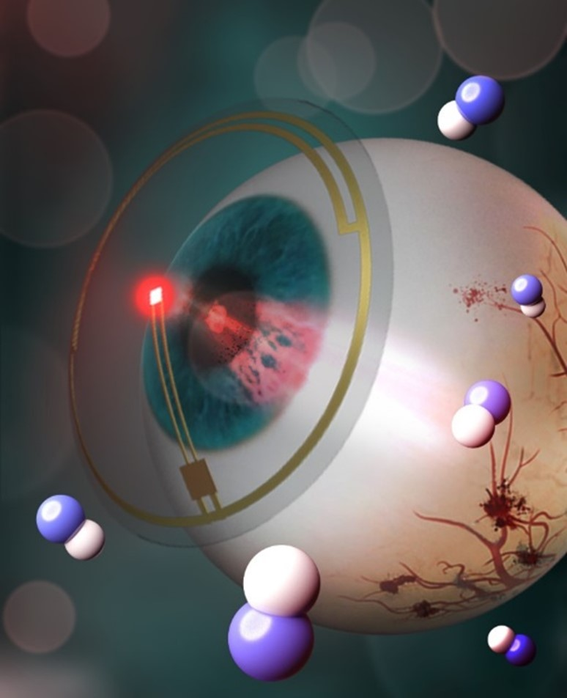Diabetes, a long-lasting chronic disease, has various complications and requires care over a lifetime. The longer a patient suffers from diabetes, the greater the risk of developing retinopathy, which can gradually lead to vision loss and even blindness.
 Schematic diagram of the prevention and early treatment system for diabetic retinopathy using wirelessly driven smart contact lenses equipped with LEDs. Image Credit: Pohang University of Science & Technology.
Schematic diagram of the prevention and early treatment system for diabetic retinopathy using wirelessly driven smart contact lenses equipped with LEDs. Image Credit: Pohang University of Science & Technology.
A research group from Pohang University of Science & Technology (POSTECH) headed by Professor Sei Kwang Hahn and Ph.D. candidate Geon-Hui Lee (Department of Materials Science and Engineering) in collaboration with Dr. Sangbaie Shin of PHI BIOMED Co has recently designed a smart contact lens-type wearable device to avoid diabetic retinopathy and treat it in its early stages by irradiating 120 µW far-red/LED light into the retina.
This technology for smart LED contact lenses has gained a lot of attention for numerous ophthalmologic diseases.
At present, diabetic retinopathy is treated by highly invasive repeated therapeutic injections to the eyeball or thousands of small burns made with a laser to ruin capillaries next to the edges of the retina under anesthesia. Both procedures are highly painful for the patient.
The scientists confirmed that diabetic retinopathy did not show up in animals that wore the smart contact lenses for around 15 minutes, three times a week for a total of eight weeks. The study was performed with diabetic animal models.
At the same time, the animals that did not wear the lenses showed retinopathic conditions. Also, the safety and effectiveness of the lenses were confirmed by the histological analysis of the retina and cornea.
This study has demonstrated the feasibility of a lens-type wearable device for the applications not only to monitoring oxygen saturation, heart beating rate, and ophthalmologic diseases but also to treating depression, insomnia, neuronal diseases and more.
Sei Kwang Han, Study Lead Author and Professor, Pohang University of Science and Technology
This study was performed by the financial support from the Nano Material Technology Development Program, Disease Oriented Translational Research, Mid-career Researcher Program, Brain Korea 21 Fostering Outstanding Universities (FOUR) project, and the Korea Medical Device Development Fund of the National Research Foundation of Korea, and by the World Class 300 Project of the Ministry of SMEs and Startups of Korea.
Journal Reference:
Lee, G.-H., et al. (2022) Smart Wireless Near-Infrared Light Emitting Contact Lens for the Treatment of Diabetic Retinopathy. Advanced Science. doi.org/10.1002/advs.202103254.